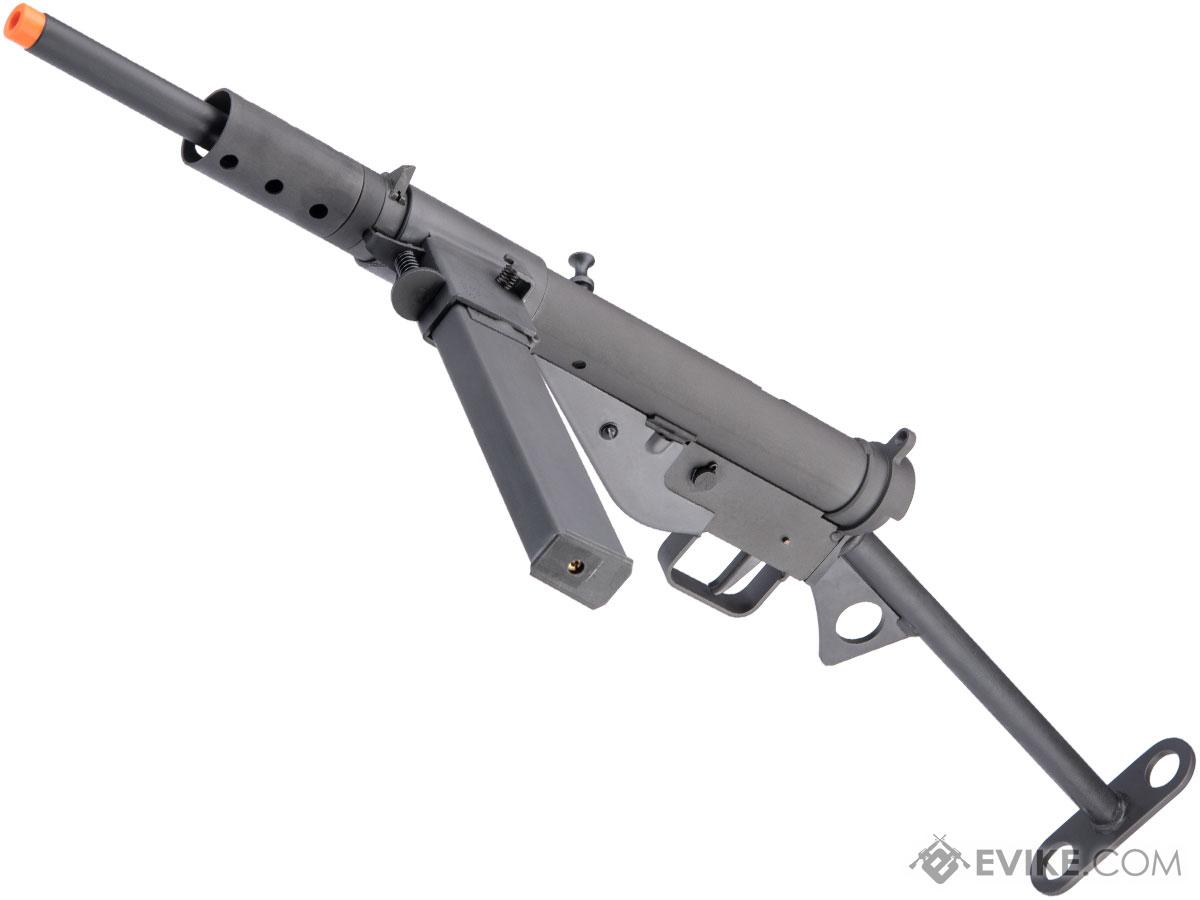

Worried that they would have no equivalent weapon to match the German SMG, the BEF hastily arranged field trials for several submachine guns, quickly settling on the Thompson submachine gun. Out of about 2500 rounds fired, 2 stoppages, in each case due to a dud cartridge – treatment, simply to work the bolt by hand.In late 1939, shortly after the beginning of World War II, the British Expeditionary Force in France became concerned by reports that the Germans were arming their troops with large numbers of inexpensive MP38 submachine guns. No kick, no vibration, very little noise, and reasonable accuracy. If the Government had the guts to do that they would really have burned their boatsįired the Sten gun for the first time today. Weight of the gun without magazine is 5 ½ pounds – I can see a million or two million of these things, each with 500 cartridges and a book of instructions, floating down all over Europe on little parachutes.

Last night for the first time took a Sten gun to pieces. He was also a member of the Home Guard and in August wrote in his diary his impressions of the Sten in two entries dated August 7 9. In 1942 Eric Blair (Orwell) was working for the BBC doing what he considered useless propaganda work. I thought this was interesting and hopefully you will too. Just as soon as Britain was able to, after WW2, the original Lanchester design was reviewed, and a replacement for the Sten requested as soon as practicably possible.This used features from the MP28, and the MP40, and was eventually to see the light of day as the L2, commonly called the Sterling SMG. Many of these were lost before reaching the recipients. Incidentally, a great percentage of Stens were never used by regular forces, being dropped to Resistance and Partisan groups across Europe and the Balkans, for use as a suitable (and cheap) weapon in guerilla warfare. The often common popular belief that soldiers went into battle all armed with SMGs is nonsense, and the rifle, eventually the Assault rifle, was and is the mainstay of the infantryman's arsenal, and is likely to remain so as long as humans fight humans on the ground. Yes, there are still SMG's in use today, some being excellent (H&K MP5 range for example), but these are mainly used in specialised roles, such as CT, and for Policing work.

In general, the SMG (any SMG) was virtually replaced, Worldwide, in average infantry use, by the advent of the so-called 'Assault Rifle', with the MP44 being the first real weapon in widespread use, and still in use today in various 'spin offs', and of course, the AK range, the M16 etc etc. They are two distinctly different weapons, designed for very different purposes. Additionally, Britain had a large 'War Reserve' stock of P14 rifles, mainly issued to second-line units and the 'Home Guard'.Īpart from the No4 being much easier, quicker and cheaper to produce than its predecessor the SMLE, the need for, and equiping with, a SMG had no relationship whatsoever to the production of, and use of a rifle! The No4 rifle simplified the production of the time consuming and costly SMLE, which had been virtually hand-built, and there was no shortage of these, especially as they were also produced in Canada as the No4Mk1*, and also in the USA.
#A BRITISH STEN MARK 2 FULL#
Production was simplified even further and, by mid 1942, the most common variant, the Sten Mk2, was in production, first being used in action during the Dieppe raid in August 1942.īy that time, the first Lee Enfield No4 rifles had already been issued long before, being available in 1939, but not in full service use until late 1941. The first production of the Sten Mk1, a very simple weapon, but acceptable for the then present need, was completed in June 1941. (hence the name, ST for Shepherd and Turpin, EN for Enfield.) Turpin, the latter Chief of the Design Dept, R.A., Enfield.

45 ACP, and little capacity for 9mm, the first110 million rounds of which were again a US import).īy early 1941, the situation had changed, and a weapon of simple construction had been designed and proposed by Major R.V. (Britain had virtually no capacity for the production of. Up to that point, the only readily available, suitable SMG had been the American Thompson, a heavy, relatively complex, and expensive weapon, which, of course, had to be imported, along with the ammunition.
#A BRITISH STEN MARK 2 TRIAL#
Although this eventually surfaced as the Lanchester, it was relatively complex to manufacture, and somewhat costly, with acceptance trial being undertaken in November 1940. The need for a suitable sub-machine gun was firast seriously addressed in the summer of 1940, and plans put in hand to produce a weapon based on the design of the German MP28. Sorry, but that is not why the Sten was produced!!


 0 kommentar(er)
0 kommentar(er)
